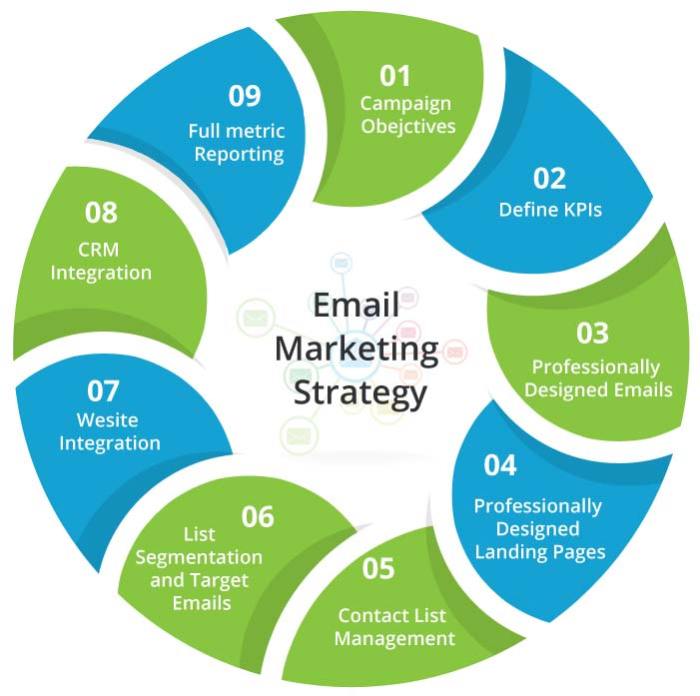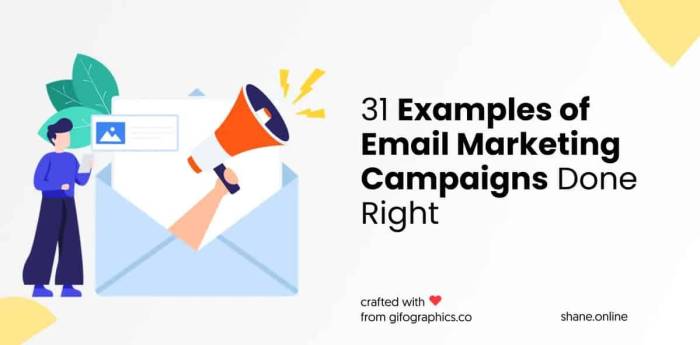Crafting compelling email campaigns hinges on more than just great content; effective design plays a crucial role in boosting open rates. This guide explores five key strategies to transform your email marketing, focusing on visual appeal, strategic subject lines, and persuasive calls to action. We’ll delve into practical techniques, backed by data-driven insights, to help you achieve significantly higher engagement with your audience.
From optimizing subject lines and preheader text for maximum impact to designing visually stunning and mobile-friendly layouts, we will cover all the essential aspects of email design. We’ll also explore the importance of A/B testing and personalization to refine your approach and consistently improve your results. This guide provides actionable steps and clear examples to help you implement these strategies effectively.
Subject Lines & Preheader Text Optimization

Crafting compelling subject lines and preheader text is crucial for boosting email open rates. A well-designed subject line acts as the first impression, while the preheader text provides a compelling preview, encouraging recipients to click and engage with your email. Optimizing both elements requires a strategic approach combining creativity, data analysis, and a deep understanding of your target audience.
Effective subject lines and preheader text are concise, benefit-driven, and personalized. They work together to create a cohesive message that grabs attention and sparks curiosity. A/B testing is vital for determining which combinations perform best, allowing for continuous improvement and refinement of your email marketing strategy.
Compelling Subject Lines
Subject lines should be short, impactful, and clearly communicate the value proposition to the recipient. Avoid using spam trigger words and focus on creating a sense of urgency or intrigue. Examples of effective subject lines include: “Exclusive Offer: 20% Off Your Next Purchase,” “Your Personalized Recommendations Are Here,” or “Don’t Miss Out: Last Chance for Free Shipping.” The ideal length is generally under 50 characters to avoid truncation on mobile devices.
Engaging Preheader Text
The preheader text expands on the subject line, providing additional context and enticing recipients to open the email. It should seamlessly complement the subject line and highlight the key benefit or offer. For example, if the subject line is “Exclusive Offer: 20% Off Your Next Purchase,” the preheader text could be “Use code SAVE20 at checkout. Offer ends soon!” This provides additional detail and creates a sense of urgency.
Personalization Techniques
Personalizing subject lines and preheader text with recipient data, such as name or location, significantly improves engagement. For instance, instead of a generic subject line like “New Products Available,” a personalized version could be “Hi [Name], Check Out Our New Products!” However, personalization should be used responsibly. Avoid overly intrusive or irrelevant personalization that might come across as spammy. Best practices include ensuring data accuracy and providing options for unsubscribing or managing preferences.
A/B Testing and Data Analysis
A/B testing is crucial for determining the effectiveness of different subject line and preheader text combinations. By testing various versions, you can identify what resonates best with your audience and continuously optimize your email campaigns. Track key metrics such as open rates, click-through rates, and conversions to measure the success of your A/B tests. This data-driven approach allows for continuous improvement and refinement of your email marketing strategy.
Responsive HTML Table: Subject Line Optimization
The following table demonstrates the relationship between subject line length, personalization, and open rates. Note that these are illustrative examples and actual results may vary based on your specific audience and email content.
| Subject Line Length (Characters) | Personalization Technique | Open Rate (Example) | Subject Line Example |
|---|---|---|---|
| 35 | First Name | 25% | Hi [Name], Check out our new arrivals! |
| 48 | None | 18% | New Arrivals Just Dropped! |
| 55 | Location + First Name | 28% | Hi [Name], from [City]! Check out local deals. |
| 28 | First Name + Urgency | 30% | Hi [Name], Don’t miss out! |
Email Content Design & Layout

Crafting visually appealing and user-friendly email layouts is crucial for boosting engagement and achieving your marketing goals. A well-designed email not only enhances the recipient’s experience but also significantly impacts open and click-through rates. This section will explore key aspects of email design, focusing on practical strategies and examples.
Effective email design considers several factors, including the overall aesthetic, mobile responsiveness, and ease of navigation. The layout should be intuitive, guiding the reader seamlessly towards your call to action. Different campaign types require tailored approaches; a promotional email will differ significantly from a transactional one in its visual style and content organization.
Effective Email Layouts for Different Campaigns
Promotional emails often employ a visually rich approach, using high-quality images and compelling headlines to grab attention. A typical layout might feature a hero image showcasing the product or offer, followed by concise text highlighting key benefits and a clear call to action. In contrast, transactional emails prioritize clarity and conciseness. These emails, such as order confirmations or shipping updates, typically feature a clean, minimalist design with clear information presented in a structured format. A promotional email might showcase a new product launch with a large, captivating image and limited text, emphasizing visual appeal. A transactional email, such as an order confirmation, will use a tabular format to present order details concisely, prioritizing readability and clarity over visual flair.
Importance of High-Quality Images and Whitespace
High-quality images significantly enhance the visual appeal of your emails and contribute to a professional brand image. However, it’s essential to optimize images for email delivery to avoid slow loading times and rendering issues. Compressing images without compromising quality is crucial. Using appropriate file formats like JPEG for photographs and PNG for graphics with transparency helps maintain image quality while minimizing file size. Whitespace, the empty space around text and images, is equally important. It improves readability by preventing the email from appearing cluttered and overwhelming. Appropriate use of whitespace allows the eye to rest, improving comprehension and engagement. For example, an email featuring a product image with sufficient whitespace surrounding it will be perceived as cleaner and more appealing than one where the image is cramped against the text.
Designing an Email in Mailchimp
Let’s Artikel a step-by-step guide to designing an email in Mailchimp. First, navigate to the “Create Campaign” section and select “Email”. Choose a template, either from the provided options or a custom design. Next, customize the template by adding your content: text, images, and calls to action. Mailchimp’s drag-and-drop interface simplifies this process. You can adjust font sizes, colors, and layouts easily. Remember to preview your email on different devices to ensure responsiveness. Finally, review your email before sending it to your audience. (Imagine a screenshot here showing the Mailchimp interface with an email template being edited. The screenshot would illustrate the drag-and-drop functionality and the various design options available within the platform. The visual would clearly show text blocks, image placement areas, and the overall layout customization options.)
Comparison of Minimalist and Maximalist Email Design Approaches
The choice between a minimalist and maximalist design depends on your brand’s identity and the campaign’s objective. A comparison of their impact on open rates isn’t straightforward; it depends on your target audience and the email’s content.
- Minimalist Design: Emphasizes simplicity and clean lines, using limited colors and images. This approach can improve readability and reduce clutter, potentially increasing engagement for audiences who prefer a clean aesthetic. However, it might lack the visual impact needed to attract attention in crowded inboxes.
- Maximalist Design: Utilizes bold colors, multiple images, and a more visually busy layout. This approach can capture attention and create a memorable experience, but it might overwhelm some recipients and lead to lower open rates if not executed carefully. It is crucial to balance visual elements to avoid appearing cluttered.
Call to Action (CTA) & Conversion Optimization

Crafting compelling calls to action is crucial for maximizing the effectiveness of your email marketing campaigns. A well-designed CTA guides recipients towards the desired action, transforming passive readers into engaged customers. This section explores strategies for optimizing your CTAs to boost conversion rates.
Effective CTA Design and Wording
Clear, concise, and compelling calls to action are essential for driving conversions. Weak CTAs often result in low click-through rates. Strong verbs and a sense of urgency significantly improve performance. For instance, instead of a weak CTA like “Learn More,” consider using stronger options such as “Get Your Free Guide Now” or “Shop the Sale Today.” The addition of “Now” creates a sense of immediacy, encouraging quicker action. Similarly, instead of “Visit our website,” a more effective CTA might be “Discover Exclusive Offers.” The latter is more enticing and hints at a benefit for the recipient.
CTA Button Design Best Practices
The visual design of your CTA button is just as important as the wording. Color psychology plays a significant role. High-contrast colors that stand out from the surrounding email content are generally more effective. A vibrant button color against a neutral background ensures visibility. Button size also matters; a larger button is easier to click, particularly on mobile devices. Aim for a size that is easily tappable with a finger. Finally, placement is key. Strategically position your CTA to naturally guide the reader’s eye towards it. This could be at the end of your email, or after a compelling section of content.
Consider these visual examples: In a single-column email layout, placing the CTA button prominently at the bottom, centered, would be ideal. In a two-column layout, the CTA could be placed at the end of the right column, drawing the eye after the reader has processed the content. A three-column layout might benefit from a CTA button spanning the entire width at the bottom, creating a strong visual cue.
CTA Strategy and Conversion Rate Data
The effectiveness of a CTA strategy depends heavily on the specific goals and audience. Different strategies will yield varying conversion rates. Below is a table illustrating potential CTA strategies and their estimated conversion rates (note that these are illustrative examples and actual rates vary widely depending on numerous factors such as email list quality, offer relevance, and overall campaign design).
| CTA Strategy | Description | Conversion Rate (Example) |
|---|---|---|
| Limited-Time Offer | Creates urgency with a time-sensitive offer. | 5-10% |
| Free Resource Download | Offers valuable content in exchange for email signup or other action. | 10-15% |
| Exclusive Discount | Provides a unique discount code to incentivize purchase. | 15-20% |
| Personalized Recommendation | Offers products or services tailored to the recipient’s preferences. | 10-15% |
| Clear and Concise Call to Action | Uses strong verbs and action-oriented language. | 8-12% |
Closing Summary

By implementing these five design strategies – optimizing subject lines and preheaders, crafting visually appealing layouts, incorporating compelling calls to action, and leveraging personalization and A/B testing – you can dramatically increase your email open rates. Remember, consistent testing and refinement are key to long-term success. Focus on creating emails that resonate with your audience, providing value, and guiding them towards desired actions. The result will be a more effective and engaging email marketing strategy that drives tangible results.